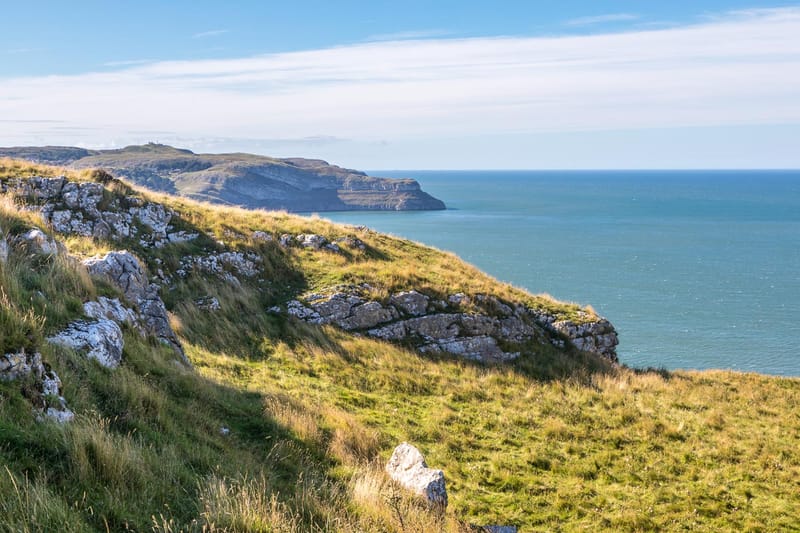The Little Orme

What is it?
The Little Orme is classed as a HuMP (having a minimum Hundred Metre Prominence) It is one of two headlands situated at either end of Llandudno Bay
Where is it?
Llandudno Bay, Conwy

What’s there?
The North Wales Bird Trust is located on its lower slopes, and the Little Orme is a warden-patrolled sanctuary for sea birds. Bird viewing around the cliffs can be facilitated by trips using small boats. Seals can be seen at what is locally called Angel Bay. The North Wales Path runs across the Little Orme, using the several public footpaths on its summit. The cliffs are a popular challenge for highly experienced rock climbers. The Coast Guard Rescue Unit use the Little Orme for training.
Facts -
▪ The Little Orme headland, or Rhiwledyn, was extensively quarried from the late 1880s.
▪ When a deep natural fissure was uncovered in 1891, inside were found the skeletal remains of a woman dating from c.5,570 years ago. Bronze Age finds included a bronze spearhead and the bones of animals now extinct in Britain such as the rhinoceros and bear.
▪ Above the cliffs of the Little Orme is a cave where the first book to be published in Wales was printed, during the Elizabethan persecution of Catholics in Britain. The cave is small, with a low entrance. The printing press was discovered in 1587, after someone on a boat saw smoke coming from the cave.
▪ Sir Thomas Mostyn of Gloddaeth Hall dispatched a posse of 40 men. They decided it was too dangerous to enter through the 60cm-high hole, and stood guard all night. In the morning the people responsible for the press had gone. The guards discovered there was a chimney out of the main chamber through which the priests had escaped. There have been many different stories about this cave, but in 1962 archaeologists found evidence which seems to authenticate the story.
▪ The natural and man-made cliffs are ideal nesting areas for birds including fulmars, ravens and little owls. Grey seals use Porth Dyniewaid, north of the quarry remains, as a nursery in autumn.
▪ Orme comes from a Scandinavian word, referring to the headland resembling the head of a serpent.
